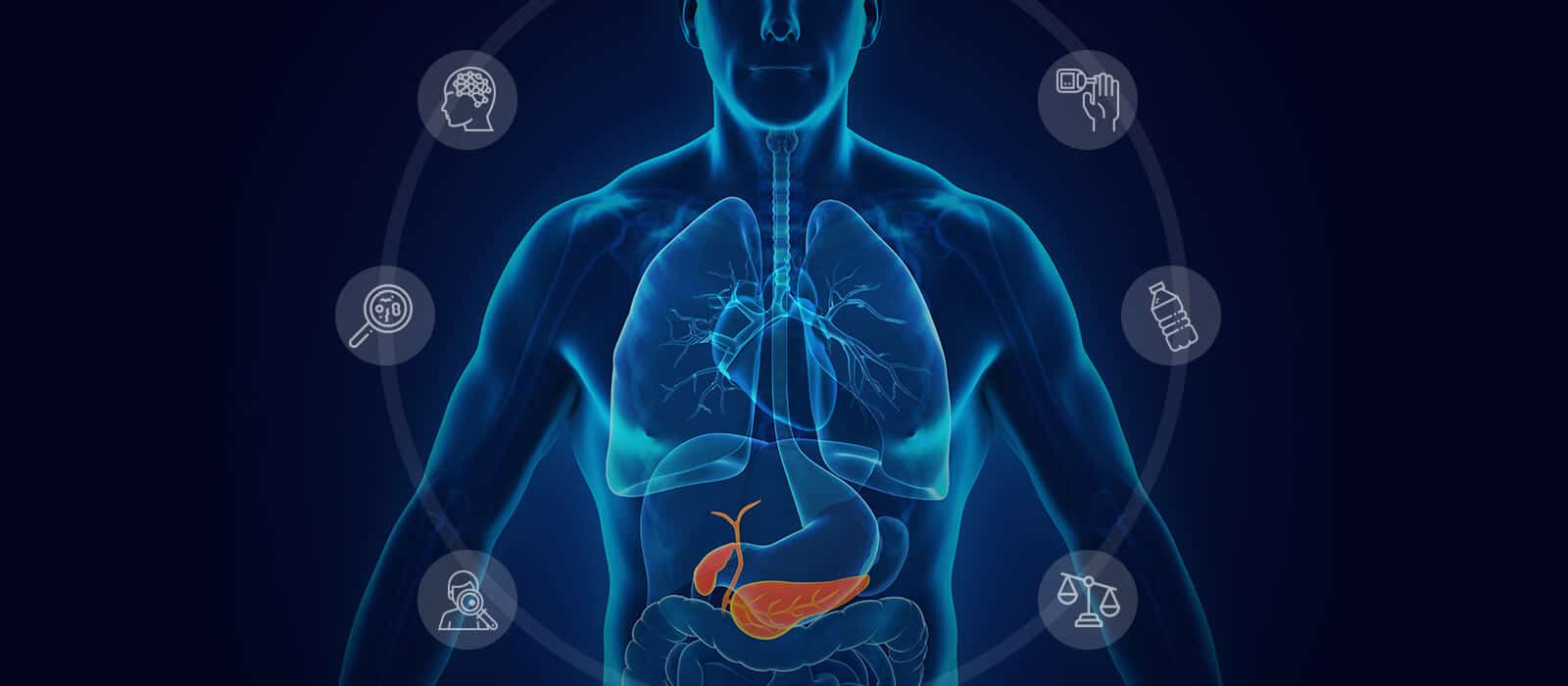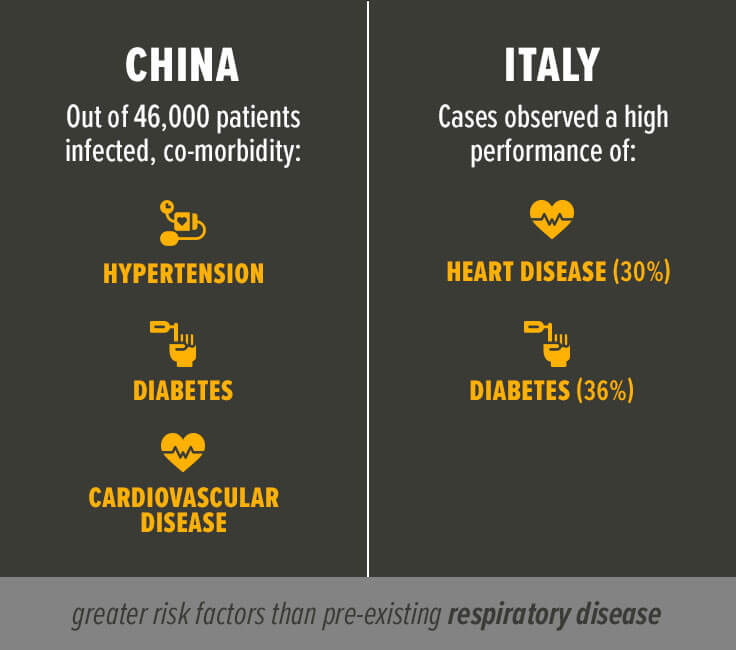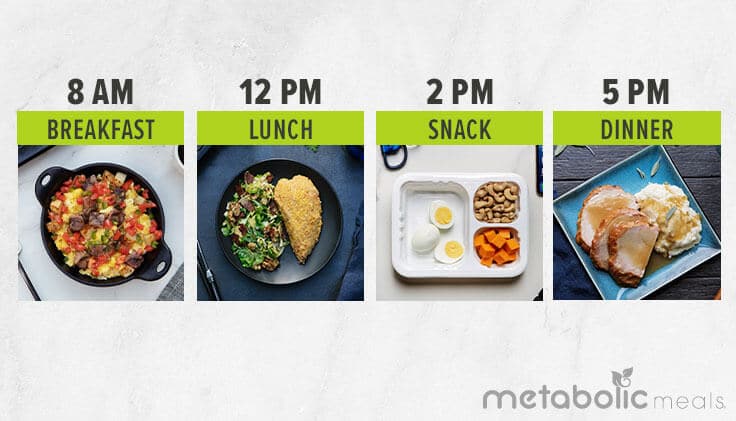ARTICLE AT A GLANCE
Metabolic Syndrome is diagnosed when a person has at least three of these four conditions: Insulin Resistance, Elevated Blood Pressure, Dyslipidemia, and Central Obesity.
This condition is most often brought on by a diet high in processed foods, high carbohydrates and inactivity, which together cause high blood sugar.
High blood sugar can increase chances of infection and slow the healing process – a major concern in light of COVID-19. As stay-at-home orders are mandated across most states in the US, it is likely to increase sedentary behaviors for people with Metabolic Syndrome. Couple that with the tendency to stock up on shelf-stable, highly processed food and we’re facing a crisis.
As America now leads the world in Coronavirus cases, it’s important to note that only 12% of our adult population are considered to be in good Metabolic Health.
We must improve on this statistic, now.
THE BACKGROUND
How does high blood sugar increase your chance of infection?
Under normal circumstances, early onset of an infection results in the release of chemokines that attract circulating neutrophils (a type of white blood cell) which migrate to the infection site and begin destroying viruses and bacteria.
High blood sugar is associated with higher levels of inflammation, which can trigger the body to have larger concentrations of neutrophils. However, this can greatly limit the movement of those neutrophils from the blood vessels to the infected tissue.
Why does high blood sugar slow the healing process?
High levels of blood sugar can damage blood vessels and cause plaque to build up within them. This results in blood circulation issues, preventing nutrients and oxygen from being delivered to cells.
Subsequently, the immune system stops working as efficiently and cellular inflammation increases.
What is the connection between Metabolic Syndrome and COVID-19 deaths?
A recent meta-analysis from China involving over 46,000 patients showed that the most prevalent co-morbidity in people infected by COVID-19 was hypertension followed by diabetes and then cardiovascular diseases.

These are essentially the three components of Metabolic Syndrome, and all of which were found to be greater risk factors than pre-existing respiratory diseases when it comes to dying from COVID-19.

Italy is also experiencing a similar trend and an incredibly alarming death rate. Cases observed as of March 17, 2020 found a high prevalence of heart disease (30%) and diabetes (36%).
It should be noted that Italy’s higher death rate can also be attributed to an older population when compared to China. However, Metabolic Syndrome appears to greatly increase risk of death regardless of age range.
WHAT WE CAN DO ABOUT IT
Five Ways to Improve Metabolic Health Even Under Quarantine
1. Reduce carbohydrates in your diet.
According to the Journal of the American Medical Association, Americans on average get 50.5% of their calories from carbohydrates with a very large amount coming from processed, high sugar and low-fiber foods. Easy access to snacks, desserts, sugary beverages and grab-and-go items are the main culprits.
Unfortunately, these seem to be the exact foods many Americans are purchasing from the store right now as fresh produce is largely left untouched.
Keeping carbs at less than 20% of total caloric intake can have profound health benefits. Aim for less than 100g per day, divided out between 3 meals.
2. Balance your omega 3:6:9 fat intake.
Oils such as soy, corn, safflower, cottonseed and canola are known for increasing inflammation and are consumed in very high amounts within a standard American diet, especially within processed foods.
Some experts estimate that Americans are consuming 20X more Omega 6 than they should be and are not maintaining a proper balance of the fatty acids Omega 3:6:9. This is important to know, as The Canadian Journal of Cardiology reports that high levels of the inflammatory marker CRP was significantly related to risk for a heart attack.
Healthy fats are unrefined and examples include:
– Grass-fed red meat
– Pasture-raised poultry
– Wild-caught fatty fish
– Avocados
– Olives
– Nuts
– Seeds
Maintaining a balance of omega 3:6:9 is the goal and can be achieved by a steady rotation of the foods listed above.
3. Stop snacking.
Dr. Satchin Panda, professor at the Salk Institute, has found in his research that most people “graze’” over a 15 hour+ window each day. This leads to overeating from a calorie standpoint, blood sugar peaks and valleys and digestive issues.
Many people who are working from home at the moment report eating out of boredom or stress. Try setting specific meal times to avoid this habit such as:

4. Move more. A lot more.
Moderate to intense exercise (less than 60 minutes per day) leads to:
– Lower number of dysfunctional T cells
– Increased T-cell proliferative capacity
– Greater natural killer cell cytotoxic activity
– Increased neutrophil phagocytic activity
– Enhanced vaccination response
There’s no shortage of bodyweight exercises, yoga routines or dumbbell circuits available for free online to try out. Exercise is one of the best things you could possibly do to drive glucose down and improve mental health at a time when we need it most.
Need some inspiration? We’ve partnered up with two top strength and conditioning coaches to bring you workouts you can do at home every week.
5. Improve your sleep quality.
Studies show that reductions in sleep duration over multiple nights resulted in poor glucose response and insulin resistance in healthy individuals. Another study showed that sleep restriction to only four hours of sleep, for two or more nights, reduced glucose tolerance by 40% and reduced the acute insulin response in healthy subjects by 30%.
Even a single night poor sleep for healthy individuals (four hours of sleep) led to acute insulin resistance. This really highlights the important role sleep duration plays in insulin sensitivity and glucose regulation.
Aim to go to bed before 11 p.m. and get 8 hours of sleep. Early to bed, early to rise matches our circadian rhythm.







